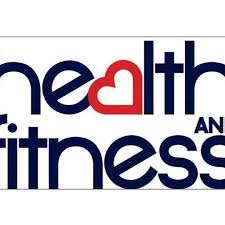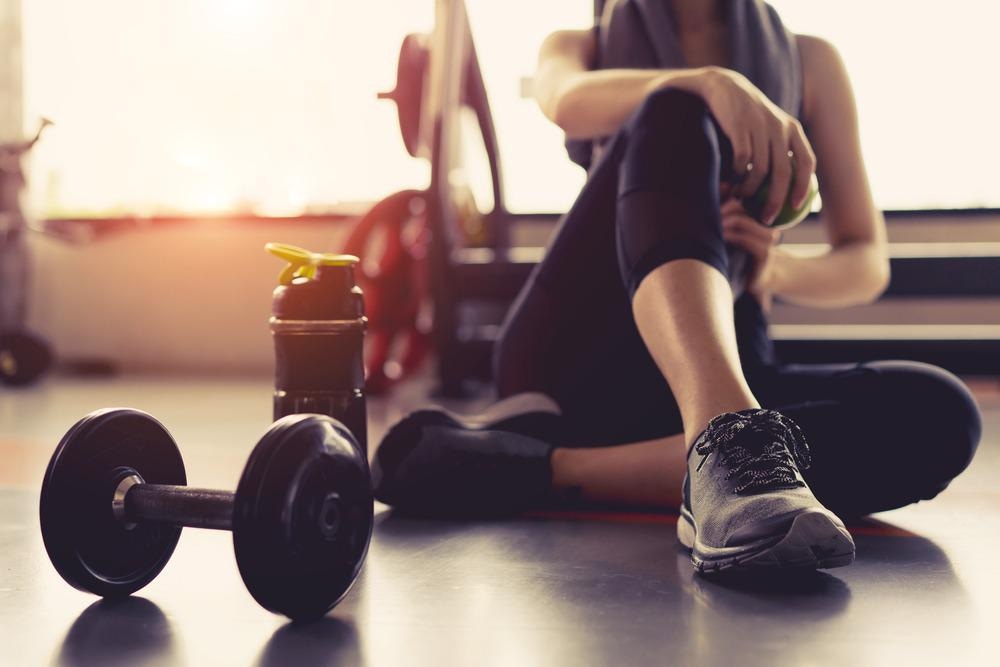
To perform a medicine ball full body workout, you should stand with your feet shoulder-width apart and the ball in front of you. Next, lower your body into a squat while bringing the right foot forward. Make sure that the heel of your right foot is even with the toes of your left foot. When holding the medicine balls, make sure your body is straight and your chest aligned with your knees. Then, place your hands on the ground and then drape them down your chest.
Start by standing with your feet hip-width apart. Then, hold the medicine ball in front of your chest. Press your hips backward and keep your spine long. Continue to lower yourself until you feel a slight tension in your legs. Next, lower your hips and press your feet on the floor. You should repeat this motion between 12 and 15 times. Do not fall too low. You will want to keep your core engaged during the exercise.

Stand with your legs straight out in front of you to begin the exercise. Stand with your legs straight out in front of the medicine balls. Step back with your right leg, and then step back with your left leg. Bend your knees slightly to sink into your left leg. Rotate your hips to the right side and then return to the standing position. Three sets of 12 repetitions of this exercise are required. Finish the exercise by switching your legs and repeating the steps.
Start a warm-up. Your trunk should be turned so that your feet are wide. While you shouldn't move your legs, twist your torso while you walk. Next, take the medicine ball and place it on your chest with both of your hands. Next, squat down and raise your chest. Once you've done all the warm-up exercises, start a full-body workout with the medicine ball.
Another exercise that is full-body-intensive is the medicine ball lut. To perform the exercise, you should stand with your feet hip-width apart. Then bend your right foot 90 degrees. After you have completed a lunge you can reach for the ball with your left hand. Once you stand, lift the medicine-ball up to your chest. Then, repeat the motion to the right side.

When you're done with the standing medicine ball exercises, the next step in the exercise is the seated medicine ball exercise. Place the medicine ball on your chest. Then, bend your knees and hold the medicine-ball over your left shoulder. For 30 seconds, repeat the same rotation. Rest for 10 seconds after completing the exercise. Then, move on to the next step. You can also do a full-body medicine ball seated workout while sitting. Keep your feet off of the floor and place your face down on the flooring. Now, turn your hip bones so that your body is centered.
FAQ
How often should I exercise
Fitness is key to a healthy lifestyle. However, there isn't a set amount of time you must spend working out. It is important to find something that you enjoy and stay with it.
Three times a week, you should be aiming to complete 20-30 mins of moderate intensity activity. Moderate intensity means you'll still be breathing hard after you've finished. This type is good for burning around 300 calories.
If you prefer to walk, go for 10 minute walks four days a week. Walking is low-impact, easy on your joints, and it's also very gentle.
Jogging is an alternative to running. You can do it for as little as 15 minutes each day. Running is a great way of burning calories and building muscle tone.
You can start slow if you're new to exercise. Begin by only doing 5 minutes of cardio five times per week. Gradually increase the duration until you reach your goal.
How can you live a healthy life?
Healthy lifestyles include eating right, exercise regularly, getting enough rest, managing stress, having fun, and eating healthy. Avoiding sugar and processed foods is key to eating well. Exercise helps burn calories and strengthens muscles. Sleeping well improves concentration and memory. Managing stress reduces anxiety and depression. Fun keeps us happy and healthy.
What's the problem in BMI?
BMI stands for Body Mass Index, which is a measurement of body fat based on height and weight. This formula calculates BMI.
Add weight in kilograms to height in meters squared.
The result is expressed as a number from 0 to 25. A score greater than 18.5 is considered overweight. A score greater than 23 is considered obese.
A person who weighs 100 kilograms and is 1.75m tall will have an BMI of 22.
How can I reduce my blood pressure
First, you must determine what is causing high blood pressure. Next, take steps that will reduce the risk. This could be as simple as eating less salt, losing weight, taking medications, etc.
It is important to ensure that you get enough exercise. Walking is a great alternative if you don't have the time or energy to exercise regularly.
If you're not happy with how much exercise you're doing, then you should consider joining a gym. You will likely want to join an exercise group that shares your goals. You will find it easier to keep to a workout schedule if you have someone to watch you at the gym.
How can I live my best life everyday?
To live a happy life, the first step is to discover what makes you happy. Once you are clear about what makes you happy and satisfied, you can move on to the next step. You can also inquire about the lives of others.
You can also read books like "How to Live Your Best Life" by Dr. Wayne Dyer. He discusses happiness and fulfillment in every aspect of our lives.
What should you eat?
Take in lots of fruits and veggies. They are rich in vitamins that can strengthen your immune system. Vegetables and fruits are high in fiber which helps to digest and fill you up. Try to include at least five servings of fruit and veg per day.
Water is essential for your body. Water flushes toxins from your body and helps you feel full between meals. Drink about eight glasses each day.
Consume whole grains and not refined. Whole grains are rich in nutrients such as iron, zinc and magnesium. Refined grains lack some nutrition.
Sugary drinks should be avoided. Sugary drinks are full of empty calories and lead to obesity. Instead, drink water, milk, or unsweetened Tea.
Avoid fast food. Fast food has little nutritional value. You won't get the energy you need to function well, despite how delicious it may be. Choose healthier options like salads, soups and sandwiches as well as pasta dishes.
Reduce your alcohol intake. Alcohol contains empty calories and contributes to poor nutrition. Limit your intake to two alcoholic drinks per week.
Reduce your consumption of red meat. Red meats can be high in cholesterol and saturated fat. Choose lean cuts such as beef, pork and lamb, chicken, fish, or turkey.
Statistics
- According to the 2020 Dietary Guidelines for Americans, a balanced diet high in fruits and vegetables, lean protein, low-fat dairy and whole grains is needed for optimal energy. (mayoclinichealthsystem.org)
- WHO recommends reducing saturated fats to less than 10% of total energy intake; reducing trans-fats to less than 1% of total energy intake; and replacing both saturated fats and trans-fats to unsaturated fats. (who.int)
- This article received 11 testimonials and 86% of readers who voted found it helpful, earning it our reader-approved status. (wikihow.com)
- According to the Physical Activity Guidelines for Americans, we should strive for at least 150 minutes of moderate intensity activity each week (54Trusted Source Smoking, harmful use of drugs, and alcohol abuse can all seriously negatively affect your health. (healthline.com)
External Links
How To
What does the term "vitamins" mean?
Vitamins are organic compounds naturally found in food. Vitamins aid us in absorbing nutrients from the food we eat. Vitamins are not made by the body, so they must be obtained through food.
There are two types of vitamins: water soluble and fat soluble. Water-soluble vitamins dissolve in water easily. Examples include vitamin C,B1 (thiamine), B2 (riboflavin), B3 (niacin), B6 (pyridoxine), folic acid, biotin, pantothenic acid, and choline. Fat soluble vitamins are stored in the liver and fatty tissue. Some examples include vitamin D and E, K, A and beta carotene.
Vitamins are classified according their biological activity. There are eight major vitamin groups:
-
A - Vital for normal growth and maintaining good health.
-
C - vital for proper nerve function, and energy production.
-
D - necessary for healthy bones and teeth.
-
E - needed for good vision and reproduction.
-
K - required for healthy muscles and nerves.
-
P - essential for strong bones, teeth and tendons
-
Q - aids digestion, absorption and absorption iron
-
R - necessary for making red blood cells.
The recommended daily intake (RDA), of vitamins varies with age, gender and physical condition. RDA values are set by the U.S. Food and Drug Administration (FDA).
For adults aged 19 and older, the RDA for vitamin B is 400 micrograms daily. Pregnant women require 600 micrograms daily to support fetal development. Children ages 1-8 require 900 micrograms per day. Children under 1 year old require 700 micrograms daily, while infants over one year old need 500 micrograms every day. This decreases between 9 and 12 months.
Children between the ages 1--18 years old who are overweight or obese require 800 micrograms per Day, while those who are overweight or obese need 1000 micrograms. To meet their nutritional needs, children underweight and obese require 1200 micrograms a day.
Children aged 4-8 years old who have been diagnosed as having anemia require 2200 micrograms of vitamin C per day.
2000 micrograms is the minimum daily intake for adults over 50 years old to maintain good health. Women who are pregnant or breastfeeding need 3000 micrograms per day due to increased nutrient requirements.
Adults over 70 need 1500 micrograms daily, as they lose 10% of their muscle every ten years.
Women who have been pregnant or are lactating require more than the RDA. Pregnant women need 4000 micrograms per dayduring pregnancy and 2500 micrograms per day after delivery. Breastfeeding mothers need 5000 micrograms per day when breast milk is being produced.